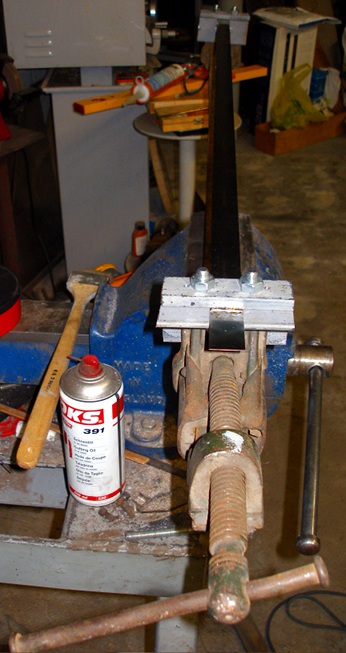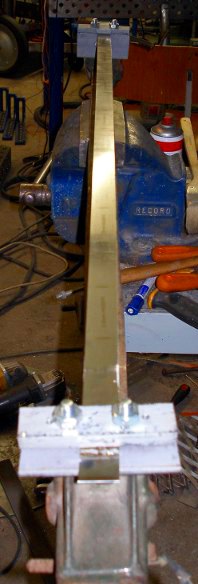
departement muziek & drama
<Ribby>
an automated ribbon player
Godfried-Willem RAES
2010-...
![]()
|
departement muziek & drama |
|
<Ribby>
|
<Ribby>
No string gives an adequate sound if not coupled to a resonator of some sort.
This truth is caused by the fact that a string never has enough surface area
to set the surrounding air into substantial vibration directly. Therefore, in
string instruments the vibrations of the string are transmitted to a soundboard
with a large surface and/or a resonator. If we could only achieve to increase
the surface of the string itself, it would be possible to obtain a well sounding
string without recourse to further acoustic amplification techniques. This insight
has led us to the idea of designing an instrument using ribbons instead of circular
strings. If the surface of the ribbon is only large enough, we would thus obtain
a string instrument without soundboard. Although we played around with this
idea for a long time, and actually used ribbons under very low tensions in electromechanical
instruments in our <Hex> project (1980) , only in 2010 we started the
practical design of an instrument along these lines. The very first problem
to tackle was how to bring the ribbon under sufficient tension. It will be clear
that standard tuning pegs or screws are of no use in this case. Bending the
ribbon over a cilinder invariably breaks the ribbon as soon as appreciable tension
is applied. Therefore we designed a flat clamping system sliding on a solid
frame and adjustable with a trapezoidal thread. 

We got the ribbon under high tension this way, but the problem was that the slightest mismatch between the forces excerted on both sides leads to the ribbon sounding a quite distinct interval clearly demonstrated by striking the ribbon at alternating edges. Obviously proper resonance and a full sound could not be achieved this way, although as a proof of concept it seemed to work quite well: we got it to sound pretty loud without using any kind of soundboard. This called for a solution to make it possible to remove all torsion components in the excerted force. Either two separate trapezoidal threads or a sideways adjustment came up as solutions.
After these experiments and their evaluation we thought that considering to make an instrument with one ribbon for each note, although imaginable and possible leading to a much improved 'piano' design, would call for a factory to make us the required cast iron frame and the tuning mechanisms. The costs involved appeared unsurmountable. Then the idea came up to design the instrument as a monochord -a few of the same could be combined to an extended and even polyphonic instrument. In this case different pitched could be played by using a slider over the ribbon, as used on the slide guitar. This slider could than be driven with a long linear motor such that on a single ribbon, an ambitus of about two octaves would become possible.
As to the excitation of the ribbon, we considered and experimented with the possibilities: striking with a piano-like hammer mechanism, bowing, or, applying the e-bow technology as we developped it earlier for our <aeio> robot. The experiments made clear also that a damping mechanism would be a musical requirement. Without damping, all notes would be sounding with a nasty portamento, Hawaian guitar style...
Midi implementation and mapping:
| subject to changes during the building process |
|
| Back to Logos-Projects page : projects.html | Back to Main Logos page:index.html | To Godfried-Willem Raes personal homepage... | To Instrument catalogue |  |
te doen.
Omdat ons vaak wordt gevraagd hoeveel werk en tijd kruipt in, en nodig is voor, het bouwen en ontwikkelen van een muzikale robot, hebben we ook voor <Ribby> een beknopt bouwdagboek bijgehouden. Omdat we de bouw tot in de laatste details graag illustreren, kan het ook voor anderen die ons op dit pad willen volgen en/of verbeteren, van praktisch nut zijn.
| (Terug) naar logos-projekten: projects.html |
Terug naar Logos' index-pagina: index.html |
Naar katalogus
instrumenten gebouwd door Godfried-Willem Raes |
by Godfried-Willem Raes
Further reading on this topic (some in dutch):